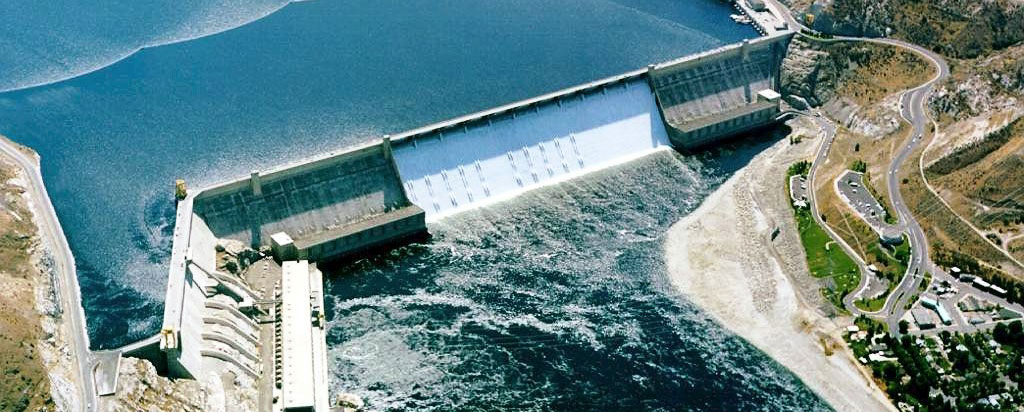Grand Coulee Dam is the largest hydroelectric facility in North America.

It has a generating capacity of 6,809 megawatts of electricity, enough to meet the needs of over 4 million residential customers a year. Indeed, Grand Coulee Dam provides 35% of the entire power supply of the Pacific Northwest, which is why many people refer to Grand Coulee as the “work horse” for the Federal Columbia River Power System.
Ironically, Grand Coulee was not built with the notion that it would play a central role in meeting the Northwest’s electricity needs. Indeed, in 1935 power generation was mostly seen as a way for paying back the costs of construction and pumping for irrigation. It was not until two years later that the Bonneville Power Administration was created to market and distribute power from federal dams in the Northwest. When the first power generating unit was brought on line in 1941, it served as a critical asset for producing aluminum and other energy intensive materials needed for World War II.
Today, Grand Coulee Dam consists of four power plants and 33 massive turbines. Water is carried from Lake Roosevelt into each turbine through a penstock, a huge pipe that (depending on which turbine is being fed) varies between 6 and 40 in diameter. The force of rushing water spins each turbine, which in turn spins a shaft that rotates magnets around coils inside a generator. The resulting electricity is carried to switchyards where it is transferred to over 22 transmission lines. These lines carry Coulee’s electricity to towns and cities throughout the Northwest and beyond.
Extensive generator overhauls and turbine replacements continue to allow Grand Coulee Dam to maximize efficiency and potential power generation. For instance, disassembly of turbines requires the removal of 6.5 million pounds of steel from each unit. Then many components of the turbine are sandblasted, welded, ground, polished and repainted before reassembly. Additional generator overhauls that will extend into the 2030s are projected.
The waters of Lake Roosevelt function as a renewable fuel source for the turbines at Grand Coulee. A particular advantage of Grand Coulee is not only its size, but its ability to store water in Lake Roosevelt for future use. With storage, turbines can quickly be brought on and off line as demand changes. For instance, in the morning, when hot showers and toasters require more electricity, Grand Coulee responds. This type of demand is called peaking, and hydropower facilities (as opposed to coal and nuclear plants) can do this much more quickly and economically.
Grand Coulee, however, cannot simply draw water from Lake Roosevelt to produce power whenever the Bureau of Reclamation wishes. Two agreements, the Pacific Northwest Coordination Agreement (PNCA) and the Columbia River Treaty, underpin how the system functions in a coordinated fashion. A 2024 Agreement in Principle to modernize the Columbia River Treaty will continue to support joint planning of river operations. Canadian storage, however, to support downstream flood control is decreasing. This may result in changes to Lake Roosevelt operations and lake levels in certain years. Click here to learn more.
The PNCA was signed by the Bureau of Reclamation, BPA, the Corps, and 15 public and private generating utilities. With PNCA comes the ability to coordinate operations among federal, public and private owners. At the heart of PNCA is a set of operating rules. These rules are then used to create a set of “rule curves” that govern the amount of firm energy (the amount of “guaranteed” power) that each project can produce during particular months. These parameters form the basis for operating the entire system. How rule curves are set and the amount of coordination that must occur is, of course, fairly complex.
The amount of non-firm power (the non-guaranteed power that Grand Coulee can generate and BPA can market) is highly variable from year to year. First, there must be a demand for the electricity that results in it being profitable for BPA to market. Second, Lake Roosevelt cannot be drawn down in a way that refill for the following year can not be guaranteed. And lastly, drawing the lake down to support non-firm energy must be balanced with other purposes. These include, for instance, needs to keep the lake elevation high enough for summer recreational needs, low enough to meet flood control needs, or high enough to allow for water releases to help migrating salmon downstream.
On a season by season, month by month, and day to day basis it takes a team of people to make these operational decisions happen.

